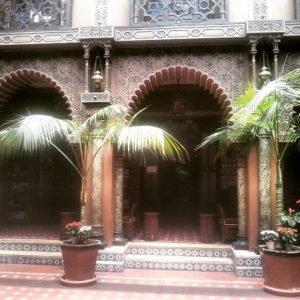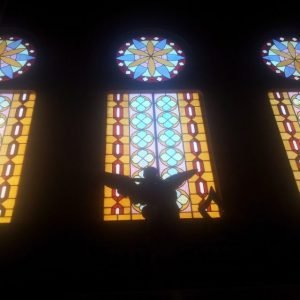When we talk about Portugal, we immediately think of cod, olive oil and castles, lots of castles. But we also think of its beautiful capital, Lisbon, full of attractions that cannot be missed.
Lisbon is a large city, currently with just over 500,000 inhabitants in an area of just over 100 km. It is known as the city of seven hills, as it was built on this land and many narrow streets mark the territory of the historic center of the capital.

The city of Lisbon is demarcated by the Tagus estuary on one of its borders. The river originates in Spain and is the longest in the Iberian Peninsula, just over a thousand kilometers long. It crosses a large part of the Portuguese territory and is where many of the tourist activities take place. On the banks of the Tagus is the well-known Praça do Comércio or Terreiro do Paço, nothing less than the largest open square in Europe, with an area of over 36 thousand square meters. Around this imposing square, there are typically Portuguese buildings, with restaurants, shops, museums and breweries. The side facing the Tagus has a beautiful viewpoint and on the opposite side, the imposing Arco da Rua Augusta. It is certainly one of the best-known and most visited areas of the city.
Continuing in the area known as Baixa, walking along the imposing Rua Augusta, which connects Terreiro do Paço to Rossio, we soon find, at the end of Praça D. Pedro IV (which everyone calls Rossio) and almost in front of the traditional Teatro Dona Maria, a small door. We soon see a line of people waiting to wait inside. And what do you find there? The traditional ginjinha, which is nothing more than a delicious drink that is half cachaça and half liqueur made from ginja, a type of wild cherry.

On the side street of the Teatro Dona Maria and after having tried the typical Alentejo drink, we come across, a hundred or so metres after the Ginjinha shop, the Casa do Alentejo, a seemingly normal building, but when we cross the main door and climb the stairs a universe of Moorish style opens up. In this place, with free entry, we can have lunch or a snack in its beautiful 18th century halls, where the nobility used to hang out and where films, soap operas and television commercials are filmed, given its beauty and grandeur.


Still in Baixa, we have a UNESCO heritage site: the Santa Justa Elevator, a neo-Gothic construction whose main function is to take people from the lower part, on Rua do Ouro, to Largo do Carmo, in the upper part, nestled in one of the seven central hills of Lisbon. The tower was designed by the Frenchman Raoul du Ponsard and began to be built at the turn of the 19th to the 20th century. It made its first trip in 1902, raising users to a height of 45 m between Rua do Ouro and Largo do Carmo.
But when we talk about Lisbon's historic center, we cannot fail to mention two of the most striking symbols of this area, its history and its battles: São Jorge Castle and Sé Cathedral, both built in what is considered one of the 25 most charming neighborhoods in the world – Alfama. The castle was built on the highest of Lisbon's seven hills with the strategic function of defending the city. It was built in the 11th century and is Moorish in style, since at the time the Moors ruled the country. It is one of the most visited monuments in Portugal and is full of attractions, such as the camera obscura, an optical system of lenses and mirrors that allows us to see, in an old and centuries-old but functional system, the city from a 360º angle.
The Sé Cathedral is visible as soon as you climb the hill – whether on foot, by tram or by car – an imposing 12th century building. Made entirely of stone, the large building withstood the strong earthquake that destroyed much of Lisbon in 1755. It is not possible to define a style for the Lisbon Cathedral, because after the earthquake it had to undergo renovations and some parts of the building were rebuilt in other architectural styles. It can be said that the Cathedral was originally built in the Romantic style. Its grandeur is evident from the façade and when you cross the enormous doors, you are immediately transported to the Middle Ages. The Lisbon Cathedral hides some treasures, which can be appreciated by visitors by going up the staircase to the right, with these relics being exhibited at the top of this staircase in a kind of hall.
Leaving the historic center of the Portuguese capital, the destination is the trendy Belém area, at the end of the city, where the Tagus River meets the ocean. There are some places that visitors cannot miss. Let's start with the most famous of them, the well-known Belém Tower, a sturdy five-story building that was built for defense purposes. It also withstood the earthquake of 1755 and, after that, it was brought closer to the city. Originally surrounded by water and the former Belém beach, over the centuries it was incorporated and is now almost on dry land. Built in 1514, the Belém Tower has a chapel, the King's Hall, dungeons and other rooms, all in the Manueline style, full of details that refer to the Portuguese Crown in the carvings on its walls.
Belém is also home to another of the country's most visited and well-known national monuments: the Jerónimos Monastery, a building dating back to 1502, also in the Manueline style. The monastery was designed by the same creator of the Belém Tower, Diogo de Boitaca, and we can see the similarities between the two works. The Jerónimos Monastery ceased to have a religious function in 1840, when it was taken over by the Casa Pia de Lisboa, an entity linked to the church that provided shelter for people in need, which left the site in 1940 when the church took over the building so that it could function in its original function: as a church.
Almost next to the Monastery is another of Lisbon's trademarks: Pastéis de Belém. The bakery, which has been in the same place since 1837, produces a well-known delicacy, with a top-secret recipe that everyone loves. Originally, the pastry, made with a combination of custard and crispy puff pastry, began to be produced in the Monastery in 1834 and only three years later did the bakery move to the building where it is still located today. Trying a Pastel de Belém is like going back in time, to the origins of Portuguese sweets. Its recipe has remained the same for centuries!